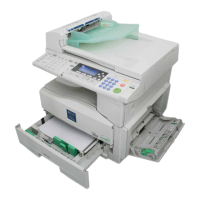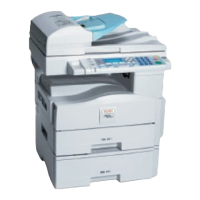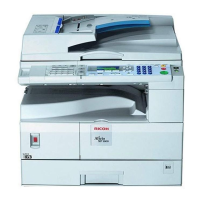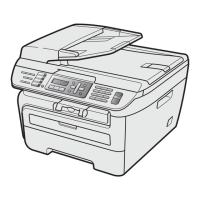TROUBLESHOOTING PROCEDURES 9 March 2004
2-6
2.2 TROUBLESHOOTING PROCEDURES
The table lists the procedures for isolating the cause.
Communication
Route
Item Action Remarks
1. Connection with the
LAN
• Check that the LAN cable
is connected to the
machine.
•
Check that the LEDs on
the hub are lit.
General LAN
2. LAN activity •
Check that other devices
connected to the LAN can
communicate through the
LAN.
1. Network settings on
the PC
•
Check the network
settings on the PC.
•
Is the IP address
registered in the TCP/IP
properties in the network
setup correct? Check the
IP address with the
administrator of the
network.
2. Check that PC can
connect with the
machine
• Use the “ping” command
on the PC to contact the
machine.
• At the MS-DOS prompt,
type ping then the IP
address of the machine,
then press Enter.
Between IFAX and
PC
3. LAN settings in the
machine
•
Check the LAN
parameters
•
Check if there is an IP
address conflict with other
PCs.
•
Use the “Network”
function in the User Tools.
•
If there is an IP address
conflict, inform the
administrator.
1. LAN settings in the
machine
• Check the LAN
parameters
•
Check if there is an IP
address conflict with other
PCs.
• Use the “Network”
function in the User Tools.
•
If there is an IP address
conflict, inform the
administrator.
Between machine
and e-mail server
2. E-mail account on the
server
• Make sure that the
machine can log into the
e-mail server.
•
Check that the account
and password stored in
the server are the same
as in the machine.
• Ask the administrator to
check.
Between machine
and e-mail server
3. E-mail server
• Make sure that the client
devices which have an
account in the server can
send/receive e-mail.
• Ask the administrator to
check.
• Send a test e-mail with
the machine’s own
number as the
destination. The machine
receives the returned e-
mail if the communication
is performed successfully.
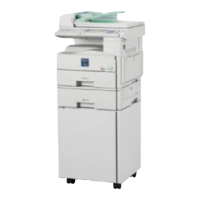
